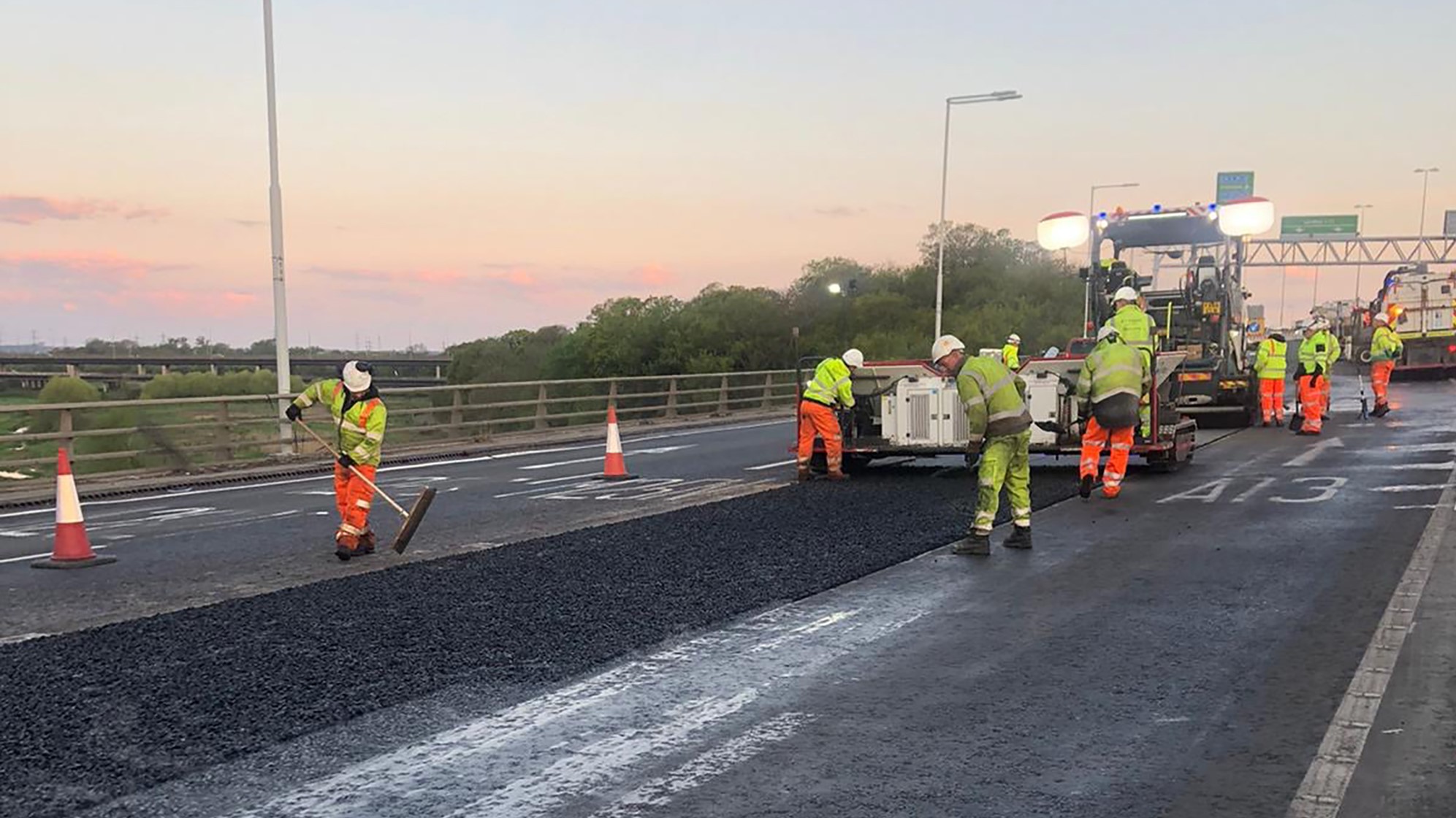Jackson was part of a collaborative team that won a Constructing Excellence Value award for their innovative approach to managing surfacing and waterproofing defects across the entire M25 network.
Previously, the challenge with this type of maintenance had been that defects were addressed in a reactive way. For example, after a period of heavy rainfall, a pothole forms in the road surface causing a lane to be closed, triggering an emergency repair to re-open the lane.
Under these circumstances only the immediate defect is dealt with, but due to the emergency nature, the rest of the structure is not fully assessed, which results in repeat visits to the same area of the network.
But a fresh methodology brought in by the M25 EMI (Enhanced Maintenance Intervention) Waterproofing team now sees the network managed in a more proactive way: planning defect repairs in clusters, and adopting new working methods to ensure the best value for the client.
Under these circumstances only the immediate defect is dealt with, but due to the emergency nature, the rest of the structure is not fully assessed, which results in repeat visits to the same area of the network.
But a fresh methodology brought in by the M25 EMI (Enhanced Maintenance Intervention) Waterproofing team now sees the network managed in a more proactive way: planning defect repairs in clusters, and adopting new working methods to ensure the best value for the client.

Efficiencies
Improvements included the use of Ground Penetrating Radar (GPR) surveys to identify moisture content in the surfacing and waterproofing layers of the structure’s deck. These surveys produce detailed visuals of the surface conditions and highlight weak points, which are not always identified by the naked eye.
This allows Jackson and the team to deliver more for less, tackling repairs in clusters, resulting in fewer interventions on the network, and reducing disruption to motorists and workforce exposure to live traffic.
This allows Jackson and the team to deliver more for less, tackling repairs in clusters, resulting in fewer interventions on the network, and reducing disruption to motorists and workforce exposure to live traffic.
Weekend shifts
The team now also optimises weekend night closures to carry out some of this work – making the most of the longer working window compared with midweek to improve productivity.
Over the course of this project, the team completed eight separate schemes, repaired 1500sq metres of defective or degrading waterproofing and surfacing – saving 26 night shifts, 7,800 man hours and more than £1million in costs.
Over the course of this project, the team completed eight separate schemes, repaired 1500sq metres of defective or degrading waterproofing and surfacing – saving 26 night shifts, 7,800 man hours and more than £1million in costs.